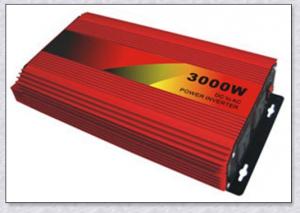3000w Inverter Solar
3000w Inverter Solar Related Searches
Cover For Solar Inverter Wifi For Solar Inverter Canopy For Solar Inverter Ct For Solar Inverter Inverter For Rv Solar Spd For Solar Inverter Solar With Electric Inverter Rv Solar Setup With Inverter High Voltage Solar Inverter Best Solar Inverter In KenyaHot Searches
Type Of Inverter For Solar Types Of Inverter For Solar Used Solar Inverter For Sale Inverter Size For Solar System Solar Edge Inverter For Sale 5kw Solar Inverter For Sale Solar Inverter For Sale Solar Inverter For Battery Solar Inverter For Split Ac Solar Inverter For Laptop Solar Inverter For Fridge Solar With Inverter Price Solar Inverter With 2 Battery Solar Inverter Price In China Best Solar Inverter In China Solar Inverter Price In Dubai Solar Inverter Price In Uae Solar Inverter Price In Kenya Solar Inverter Price In Kerala Type Of Inverter For Solar3000w Inverter Solar Supplier & Manufacturer from China
Okorder.com is a professional 3000w Inverter Solar supplier & manufacturer, offers integrated one-stop services including real-time quoting and online cargo tracking. We are funded by CNBM Group, a Fortune 500 enterprise and the largest 3000w Inverter Solar firm in China.Hot Products
FAQ
- The role of voltage support in a solar inverter is to maintain a stable and appropriate voltage level for the solar system. It ensures that the generated solar power is compatible with the electrical grid and devices connected to it, preventing any damage or malfunction. Additionally, voltage support helps optimize the efficiency and performance of the solar inverter, maximizing the power output from the solar panels.
- The different output waveforms of a solar inverter can vary depending on the type of inverter being used. The most common types include pure sine wave, modified sine wave, and square wave. Pure sine wave inverters produce an output waveform that closely resembles the standard AC power provided by utility companies, making them ideal for powering sensitive electronics. Modified sine wave inverters produce a stepped waveform that may not be as smooth as a pure sine wave, but can still power most household appliances. Square wave inverters produce a more basic waveform with abrupt transitions between positive and negative voltage, typically used for powering simple devices or tools.
- A solar inverter handles voltage fluctuation during cloud cover by continuously monitoring the output voltage of the solar panels. When cloud cover causes a decrease in sunlight and therefore a drop in voltage, the inverter adjusts its operation to maintain a stable output voltage. It does this by employing various techniques such as maximum power point tracking (MPPT) to optimize power generation, and voltage regulation to ensure the output voltage remains within the desired range. This helps to minimize the impact of voltage fluctuations and ensure the solar system continues to operate efficiently even during cloud cover.
- What is the difference between a PV inverter and a solar inverter?
- Instability, the wind speed and the equipment itself will directly affect the generator rotation, so the voltage and current fluctuations, frequency instability, in short, is the power quality is poor) Therefore, through the inverter after the first rectification inverter to improve the quality of power
- The maximum AC current output of a solar inverter varies depending on the model and capacity of the inverter. Generally, it can range from a few amps to several hundred amps.
- The role of a solar inverter in a residential system is to convert the direct current (DC) electricity produced by the solar panels into alternating current (AC) electricity that can be used to power household appliances and be fed into the electrical grid. It ensures efficient use of solar energy and enables easy integration of solar power into the existing electrical infrastructure of a home.
- The maximum DC input voltage for a solar inverter typically depends on the specific model and manufacturer. However, in general, most solar inverters have a maximum DC input voltage ranging from 600 to 1000 volts.
- Certainly! It is indeed possible to utilize a solar inverter alongside a wind turbine. Both wind turbines and solar panels generate direct current (DC) electricity, which necessitates conversion to alternating current (AC) in order to power the majority of household appliances and connect to the electrical grid. The primary function of a solar inverter is to convert DC electricity produced by solar panels into AC electricity. Interestingly, it can also perform the task of converting DC electricity generated by a wind turbine into AC electricity. However, it is worth mentioning that wind turbines typically produce higher voltage and fluctuating currents in comparison to solar panels. As a result, the inverter employed with a wind turbine may require specific design considerations to effectively manage these variations. Additionally, it is common for wind turbines to possess their own specialized inverters that are meticulously optimized to suit their unique electrical characteristics.





































